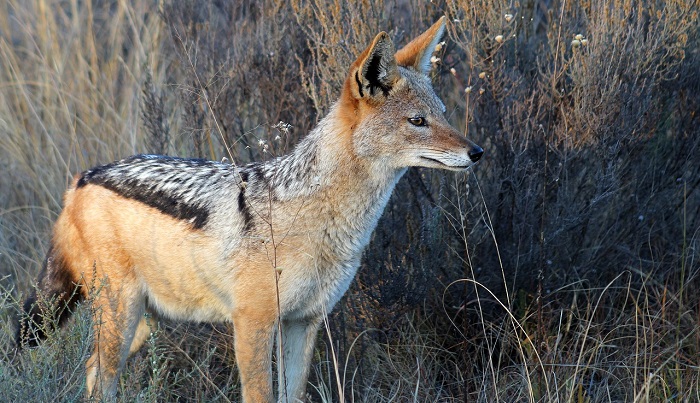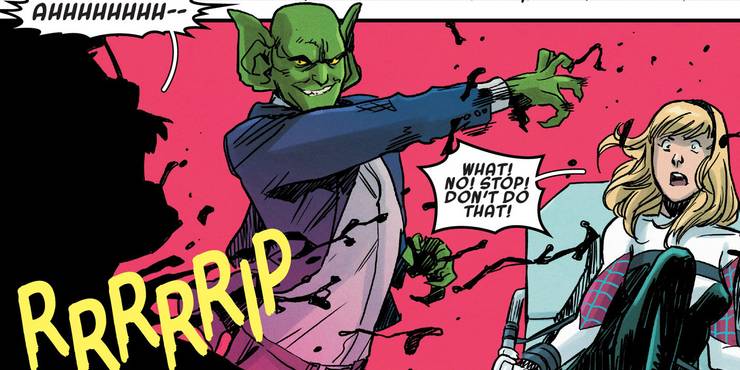Jackal Transformation
Dr. Jekyll and Mr. Hyde Literary DevicesCarly Gessner
Henry Jekyll, nicknamed in some copies of the story, Harry Jekyll, and his alternative personality, Mr. Edward Hyde, is the central character of Robert Louis Stevenson's 1886 novella Strange Case of Dr Jekyll and Mr Hyde.In the story, he is a good friend of main protagonist Gabriel John Utterson and as well as a lover of Jekyll. Jekyll is a kind and respected English doctor who has. Jackal's Transformation by sketchbagel on DeviantArt This is my Miraculous Oc Jackal Rouge. Her miraculous stone is in her anklet. I haven't quite figured out her special power, but her weapon is. Jackals are medium-sized omnivorous mammals of the genus Canis, a genus which also includes wolves and the domestic dog.While the word 'jackal' has historically been used for many small canids, in modern use it most commonly refers to three species: the closely related black-backed jackal and side-striped jackal of sub-Saharan Africa, and the golden jackal of south-central Eurasia, which is.
Setting
- Late 19th century
- London england, Victorian era
- The setting relates back to the characters because Mr. Utterson depicts the best example of a Victorian man: Prim and proper while minding his own business
- As a mystery novel, the setting gives an eerie feeling, playing along with the same same setting as other mystery novels such as Sherlock Holmes
Characterization (In order of appearance)
- Utterson- Central character, mostly keeps to himself. Not a busy body, but close friend to Jekyll and Lanyon as well as Enfield. He is a lawyer and rationalist
- Enfield- Related distantly to Utterson, but complete opposite of him. They still seem to enjoy each others company on their Sunday walks. Reserved and formal, scornful of gossip
- Jekyll- Popular physician in London, handsome and distinguished but some what shut out form the world because of his experiments: Obsessed with finding a person's evil side, why he creates Mr. Hyde within himself.
- An example of his Interest in finding the two sides, '...and from an early date, even before the course of my scientific discoveries had begun to suggest the most naked possibility of such a miracle, I had learned to dwell with pleasure, as a beloved daydream, on the thought of the separation of these elements.
- Hyde- The alive, physical version of Jekyll's evil side, very ugly and all around. So ugly people can't point out specifically why. Guilty of committing evil acts throughout the novel, poor language. Let loose by a mysterious potion
- Mr. Hyde is evil, even when people are trying to be nice to him, 'Once a woman spoke to him, offering, I think, a box of lights. He smote her in the face, and she fled.'
- Lanyon- Jekyll's closest friend, but had a falling out because of Jekyll's need to find a person's evil side. Embodiment of rationalism, materialism and skepticism
- Poole- Jekyll's main butler, been working for him for more than 20 years. Knows Jekyll so well he is able to tell that the man in the lab is not his master. Gets Utterson to help when he thinks something happened to Jekyll
- Mr. Guest- Utterson's clerk, expert in handwriting. Examines the letters of Hyde's writing and notices his hand writing is the same as Dr. Jekyll's just slanted the other way
Metaphors and Allegories

- Utterson uses a metaphor in his concern for Jekyll saying, 'Poor Harry Jekylll... my mind misgives me, he is in deep waters!'. Jekyll is not literally in deep water drowning, but Utterson knows he must be in trouble.
- Dr. Jekyll and Mr. Hyde themselves are also examples of metaphors for good and evil. Jekyll is the good side to every situation, while Hyde is the bad. Together they work in harmony, almost like the Ying and the Yang.
- An allegory for the novel would be the door leading to the laboratory. It symbolizes when and where Dr. Jekyll turns into Mr. Hyde and leaves his old self behind.
Point of View

- The narrator is unknown but speaks in the third person, even though Dr. Jekyll and Lanyon each narrate a chapter during their confessional letters
- the novel follows Utterson, for the most part, and what he sees, until Jekyll and Lanyon tell their stories
Mood and Tone
- The tone set throughout the novel is mysterious and somewhat grim.
- The mood the story gives off is sort of eerie in the sense that you don't know what kind of twists or turns the novel is going to take
Theme
- Every person has different sides- We all have two different sides to our personalities, we just don't physically transform into them when they arise. Jekyll however is obsessed with finding what his alter ego is like and spends most of his days focusing on only that. Jekyll talks about his transformation by saying, ' I was once more Mr. Hyde,' implying this wasn't the first time he changed into him.
- Importance of a person's reputation- Mr. Utterson worries tremendously about how he acts and hold himself to a high standard. He minds his own business and doesn't want to believe in the supernatural because people might find him crazy, ruining his perfect reputation. Utterson is described in the first sentence of the book as this, 'Mr. Utterson, the lawyer, was a man of a rugged countenance, that was never lighted by a smile; cold, scanty, and embarrassed in discourse; backward in sentiment; lean, long, dusty, dreary and yet somehow lovable.'
Credits:
Created with images by Jemimus - 'The Strange Case of Dr. Jekyll and Mr. Hyde, Robert Louis Stevenson, Easton press binding.' • Karen Roe - 'Ickworth Park (NT) 02-03-2012' • andreacervantes2 - 'Cervantes-5987.jpg' • Karen Roe - 'Ickworth Park (NT) 02-03-2012' • Unsplash - 'jetty wooden plank' • Miguel Virkkunen Carvalho - 'Evening Tone' • Nederland in foto's - 'Winter theme'
What is a jackal?
The three species differ mainly in color and choice of habitat. The sandy-colored golden jackal prefers open, grassy plains, while the side-striped jackal lives along waterways with dense undergrowth and is drabber in color, has a white tip on the tail, and had indistinct stripes along the sides of the body. The black-backed jackal is recognized by the mantle of black hair on the back that contrasts with the rust-colored body. The tail is black-tipped, as is that of the golden jackal. The black-backed jackal is usually the most frequently seen, as it is more diurnal than the other two species.

Common jackal (Canis aureus), Side-striped jackal (Canis adustus), Black-backed jackal (Canis mesomelas)
8 to 10 kilograms (17 to 25 pounds)
70 to 85 centimeters in length (27 to 33 inches), 25 centimeter long tail (about 10 inches), and 40 centimeter standing height (about 16 inches)
8 to 9 years in the wild; up to 16 years in captivity
Open and wooded savanna, semi-desert, grasslands, shrubland
Omnivorous
About 2 months
Leopards, hyenas, eagles

Challenges
Humans are encroaching on jackals’ living spaces.
Increased habitat loss due to human population growth and resulting expansion of roads, settlements, and agriculture threatens the jackal. The livestock rearing and farming conducive to jackal and wildlife survival, are now being replaced by industrialization and unsustainable agricultural practices.
Human-wildlife conflict is a growing threat.
As habitats are lost, jackals are increasingly infringing on human settlements, where can be viewed as a danger to livestock and poultry and be killed as pests. They are also often persecuted as rabies transmitters.
Solutions
African Wildlife Foundation works with pastoralist communities to develop appropriate preventative measures that prevent loss of livestock. In Tanzania, AWF is building bomas for communities living in close proximity to carnivores. Bomas are predator-proof enclosures where livestock are kept to prevent attacks. By taking proactive steps, we are able to prevent both livestock and carnivore deaths.

AWF engages local communities to set aside land for wildlife to live undisturbed. In the Laikipia region of Kenya—which has no formal protected areas—we brought the Koija community together with a private operator to construct the Koija Starbeds Lodge. Koija Starbeds creates jobs and income for the community members. The revenue is also reinvested into the community and into conservation, and the land is protected for wildlife.
Behaviors
Jackals have family values.
Jackal Transformation Book
They usually live singly or in pairs but are occasionally found in loose packs of related individuals where their behavior is highly synchronized. They are among the few mammalian species in which the male and female mate for life. Mated pairs are territorial, and both the female and male mark and defend their territory.
Litters average two to four pups. It takes about ten days for the infants' eyes to open, and for the first few weeks of life, they remain in the thickets or holes where they were born. At about three weeks old, they begin to spend time outside playing with their littermates. At first, the games are clumsy attempts at wrestling, pawing, and biting. As they become more coordinated, they ambush and pounce, play tug of war, and chase each other. The mother changes den sites about every two weeks, so the young are less likely to be found by predators.
Jackal pups are suckled and fed regurgitated food until they are about two months old. By six months, they are hunting on their own.
Sometimes pups will stay with their parents and help raise their younger siblings. Most jackal pup deaths occur during the first 14 weeks of life, so the presence of helpers increases the survival rate.
Diet
Jackal Transformations
They are cooperative, cunning hunters.
Jackals can best be described as opportunistic omnivores. They cooperatively hunt small antelopes and also eat reptiles, insects, ground-dwelling birds, fruits, berries, and grass. They will pick over kills made by large carnivores and even frequent rubbish dumps in pursuit of food.
Habitats
Where do jackals live?
Jackal Transformation Meaning
The golden, or common, jackal lives in open savannas, deserts, and arid grasslands. Side-striped jackals are found in moist savannas, marshes, bushlands, and mountains. The black-backed — also called silver-backed — jackal lives primarily in savannas and woodlands.
